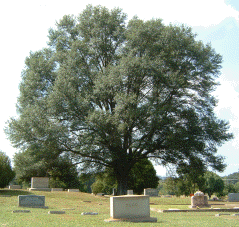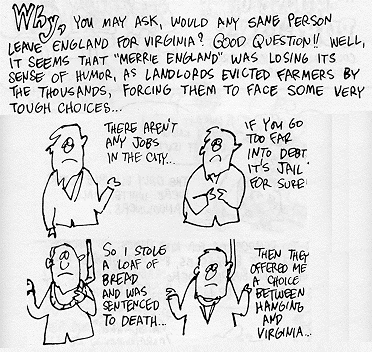
was the oldest brother of my great-grandfather Warren Akin Dodd, who is buried in Oak Hill Cemetery in Cartersville, Georgia,

along with my great-grandmother Emma Harling Dodd and their daughter Eva Dodd.
According to a copy of Memorial and Genealogical Record of Southwest Texas (Goodspeed Brothers, Chicago, 1894):
"... Thomas W. Dodd ... was born in Bartow [County], Ga., in May, 1840 ... at the breaking out of the war between the States, [he was] attending college at Cassville, Georgia, in the Cherokee Baptist College ... he lost his arm at Atlanta ... during 1865 [he] taught school for about six months, after which he began reading law and was admitted to the bar in September 1866. In October of the same year he was elected County Attorney of Bartow County, but in 1867 he entered the University of Georgia, from which he graduated in August, 1868, after which he settled in Polk County and was engaged in the practice of his profession until 1875, as a partner of Maj. Joseph A. Blance. He then came to Texas, and until November 8, 1884, was a resident and practitioner of Tyler, Smith County, ... and since that time he has resided in Laredo. ... He came to Laredo to take charge of the land business and local litigation for the Texas-Mexican R.R., and has since been the General Attorney of the Mexican national and the Tex.-Mex. R.R.'s in Texas for the past five years ... He was first married in Feb. 1864 to Miss Mattie E. Dodd, of Union District, S.C., but she died November 28, 1865, leaving an infant daughter, Mattie E., wife of William H. Sweetman, of Laredo. June 15, 1871, Mr. Dodd wedded Miss Josephine Pearce, a native of Polk Do, Ga., and to their union nine children have been given, three only now living, to-wit: Sallie May, Georgia S. and Ida Herf. ...".
According to a Laredo Morning Times Reminiscing Room web page for April 2003 entry by Stephanie Pichot Gault <stephg@stx.rr.com>:
"... Jose Santiago Sanchez of Laredo, Texas ... was the great grandson on Don Tomas Sanchez (founder of Laredo, Texas) and his wife Catarina Uribe.His grandparents were Dionicio Sanchez-Uribe m. Antonia Flores.
His parents were Antonio Sanchez Flores and Juana Mendiola.
He (Jose Santiago) married Macaria Ramos September 02, 1863 in Nuevo Laredo, Tamps., Mexico.
His children were: Jose Refugio Sanchez-Ramos (m. Ida Herf Dodd), Ofelia Sanchez-Ramos (m. Bernardo Mendiola), Amador Sanchez-Ramos (m. Maria Benavides), Antonia Sanchez-Ramos (m. Marcos de la Garza), Fidela Sanchez-Ramos (m. Servando Garza), Juana Sanchez-Ramos (m. Enrique Morton), Juvencia Sanchez-Ramos (m. Servando de la Garza), Maria Macaria Sanchez-Ramos (m. Raymundo Navarro), and Santiago Sanchez-Ramos (m. Domitila Davila de la Garza). ...".
According to a handwritten note I found:
"... Diana Ida Sanchez Marinez - Descendant of Thomas Dodd and Tomas Sanchez - (Prof. Mich. State U. - Ph.D. Oceanography) ...".
According to a Texas A&M Corpus Christi web page:
"... Dr. Diana Ida Sanchez Marinez, Dean of the College of Science and Technology at Texas A&M University-Corpus Christi, is one of 10 women named for this year's Y Women in Careers Awards. Her commitment to her heritage and to giving back to the people of South Texas is deeply rooted. Her ancestors include Don Tomas Sanchez, the founder of Laredo in 1755. She was born and raised in Laredo. ... Marinez earned her Bachelor of Arts degree from Incarnate Word College in 1963. She earned her Ph.D. in biochemistry from Indiana University Medical Center in 1968. Prior to becoming dean of the College of Science and Technology at A&M-Corpus Christi in 1994, she was at Michigan State University for 25 years and was chair of the Department of Natural Science from1984 to 1989. ... Marinez' educational leadership extends beyond Texas. She was an advisor for the National Kellogg Fellowship Program from 1993 to 1996 and has served on committees and panels for the National Academy of Science, National Institutes of Health, National Science Foundation and American Association for the Advancement of Science. She is a founding member of the Society for Advancement of Chicanos and Native Americans in Science. She is also a board member for the South Texas Institute of the Arts. Marinez and her husband, Juan, have two daughters, Carola and Danielle. ...".
At the 4th generation, I have 2^4 = 16 ancestors:
If the Gordon, Stewart (not spelled in the French no-w Stuart way), McKennon, McKinnon, and McClellan lines are mostly from Scotland; and if Lowry, Thompson, and Gwynes are mostly English; then I might be (approximately as estimated at the 4th generation level):
about 5 / 16 Scot;about 1 / 16 Irish;
about 4 / 16 English;
about 2 / 16 German (with some other);
about 4 / 16 sort of unknown (Smith being a name of occupation rather than origin, and the names of the mothers of Chrisitiana Gordon and William Jeremiah Absolom Ham being unknown).
Of course, if you go back far enough, your ancestors will NOT all be distinct. For example, at the 6th generation, Robert Dickerson, who came from England to Virginia and then to South Carolina, is my double-ancestor because he was the great-great-grandfather of both my grandmother Clara Dodd and my grandfather James Smith, who were therefore 3rd cousins.

( from The Cartoon History of the United States, by Larry Gonick, Harper Perennial 1991 )
According to Freemasonry, the Sinclair Family, and Rosslyn Chapel, by Brother Richard F. Driver (Reprinted from the 1997 Year Book of the Grand Lodge of Antient Free and Accepted Masons of Scotland), as stated on a clansinclairusa web page:
"... When Pope Clement V and King Philip of France affected the successful dissolution of the Templars on 13 Oct., 1307, many knights escaped France and England (as well as Mediterranean countries) to take refuge in the highlands of Scotland. The Scots ... King Robert the Bruce, ... then under an order of excommunication issued by the Pope and ... at war with Edward II of England ... gave his tacit approval for the outlawed Templars to take refuge in the wilds of Scotland, thus enabling them to live out their lives unmolested in the highlands.Seven years later, in 1314, Sir Henry St. Clair, allegedly a Knight Templar, and his two sons, William and Henry, took part in the ... Battle of Bannockburn ... Scots were outnumbered three to one and were struggling desperately against the forces of England's Edward II, losing men and ground rapidly, when there appeared on the horizon a well-equipped and obviously highly professional band of knights in full armor and mounted on heavy horses ... the knights ... bore no markings on their shields and carried no battle standards flying their colors. These "mysterious soldiers" joined the battle on the side of King Robert the Bruce and quickly turned the tide in favor of the Scots who won the battle and freedom for Scotland. The knights then rode off over the horizon without making known ... "from whence they came". ...".
According to a Rosslyn Chapel web site:
"... More than thirty-seven collegiate churches were built in Scotland between the reigns of James I and James IV (1406-1513). They were secular foundations intended to spread intellectual and spiritual knowledge, and the extravagance of their construction depended on the wealth of their founder. ...... Rosslyn Chapel, or the Collegiate Chapel of St Mathew as it was to have been, was founded in 1446 by Sir William St Clair, third and last St Clair Prince of Orkney. It is in fact only part of the choir of what was intended to be a larger cruciform building with a tower at its centre. ...
... The foundation stone was laid on St. Matthews day, 21st September 1446. The orientation is due east and west, marked out by the solar ray, according to the ancient tradition. A geometrical figure is usually used to regulate the proportions, and a double equilateral triangle is used in Rosslyn. ... The height of the chapel is 40 feet 8 inches, breadth 34 feet 8 inches, Length 68 feet.
There are thirty-two different forms of arch throughout the chapel, the horizontal archover the side aisles connecting the pillars with the wall, are hollow stone hung with the aid of small iron rods onto a central wooden beam. ... On the architrave joining the ... Apprentice Pillar ...
...[are]... the words in latin ... 'Wine is strong a King is stronger, women are stronger still but truth conquers all' ...
... On the three pillars standing between the east aisle and the east chapel is a choir of thirteen angels with musical instruments ... The stone arched roof
is finely decorated ...
... The Presbytery records of Dalkeith reveal that in 1589 William Knox, brother of John Knox and minister of Cockpen, was censured 'for baptizing the Laird of Rosling's bairne' in Rosslyn Chapel ... The St Clairs had not yet succumbed to the Reformation and remained Roman Catholics. ... In 1650, during the Civil War, Cromwell's troops under General Monk attacked the castle and his horses were stabled in the Chapel. On December 11th, 1688, shortly after the protestant William of Orange had landed in England and displaced the Catholic James II, a mob from Edinburgh and some of the villagers from Roslin entered and damaged the Chapel. Their object was to destroy the furniture and vestments, which were now regarded as Popish and idolatrous. ...".
References:
......